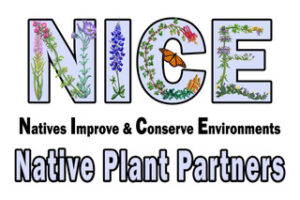 The NICE Native Plant Partner program is a collaboration between the Native Plant Society of Texas and local nurseries around the state to offer native plants that are right for the local environment.
The NICE Native Plant Partner program is a collaboration between the Native Plant Society of Texas and local nurseries around the state to offer native plants that are right for the local environment.
Texas is a large, diverse state and plants that work for one region may not always be the best choice in a different region.
NICE Partner committees, run by our local chapters, highlight native plants in cooperation with participating local nurseries and wholesalers in order to assure availability.
The Native Plant Society chapter then helps promote native plants sales to the public by providing signs and plant information at the point of sale, advertising on its website and assisting with onsite plant sale events. Many chapters share a native plant of the month/season. Look for these beauties at your local NICE! nurseries.
Each chapter’s NICE program is unique to that region’s needs. For more details, visit your chapter.
